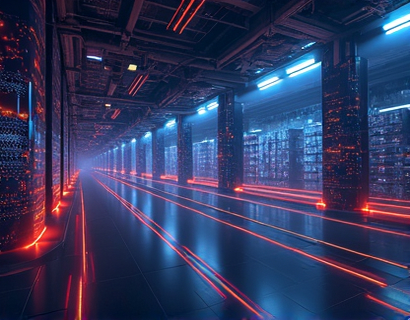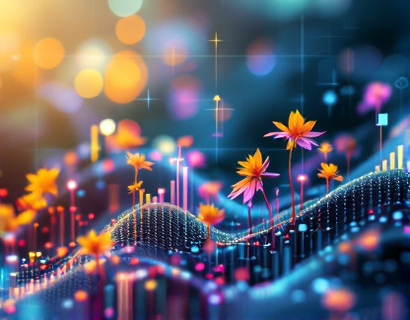Revolutionizing Aquaculture Businesses: The Power of Advanced Software Solutions
In the rapidly evolving world of aquaculture, business owners and managers face numerous challenges that can impact the success and sustainability of their operations. From managing complex supply chains to optimizing resource usage and ensuring compliance with regulatory standards, the demands are multifaceted. Advanced software solutions have emerged as a game-changer, offering a comprehensive suite of tools designed to streamline operations, boost productivity, and enhance overall efficiency. This article delves into the transformative impact of these software solutions, providing insights into how they can revolutionize the aquaculture industry.
Streamlining Operations with Integrated Software Systems
The core advantage of adopting advanced software solutions in aquaculture lies in their ability to integrate various aspects of business operations into a single, cohesive platform. This integration eliminates the need for disparate systems and manual data entry, reducing errors and saving valuable time. Key operational areas such as production management, inventory control, and financial tracking are seamlessly connected, allowing for real-time data access and analysis. For instance, a comprehensive software solution can track fish growth, monitor feed consumption, and manage water quality parameters all within one interface, providing a holistic view of the operation.
One of the primary benefits of integrated software is the enhancement of decision-making processes. With all relevant data centralized and easily accessible, managers can make informed decisions quickly. For example, real-time monitoring of water parameters can trigger alerts when conditions deviate from optimal levels, enabling prompt corrective actions. This proactive approach not only improves fish health and growth rates but also minimizes the risk of costly outbreaks and diseases.
Boosting Productivity through Automation and Optimization
Automation is a cornerstone of modern aquaculture software solutions, significantly boosting productivity by reducing manual labor and increasing efficiency. Automated feeding systems, for instance, ensure that fish receive the right amount of feed at the optimal times, based on factors such as water temperature and fish size. This not only optimizes feed conversion ratios but also reduces waste, contributing to cost savings and environmental sustainability. Similarly, automated monitoring systems for water quality parameters such as pH, dissolved oxygen, and ammonia levels provide continuous data, ensuring that conditions remain within safe limits without constant manual checks.
Another area where automation shines is in inventory management. Software can track stock levels of feed, medication, and other supplies, generating alerts when reordering is necessary. This prevents stockouts and overstocking, both of which can have negative impacts on operations. By maintaining optimal inventory levels, aquaculture businesses can reduce storage costs and ensure that essential supplies are always available when needed.
Optimizing Resource Management for Sustainable Growth
Resource optimization is crucial for the long-term success and sustainability of aquaculture businesses. Advanced software solutions offer powerful tools to manage resources efficiently, from water and energy to feed and labor. For example, water usage can be optimized through precise monitoring and control systems that adjust flow rates and filtration processes based on real-time data. This not only conserves water but also reduces energy consumption associated with pumping and treating water, leading to significant cost savings.
Energy management is another critical aspect where software solutions can make a substantial difference. By monitoring and controlling energy usage across various systems, such as lighting, heating, and pumping, businesses can identify inefficiencies and implement strategies to reduce consumption. Some software even integrates with renewable energy sources, allowing for a more sustainable and cost-effective energy supply. This dual focus on efficiency and sustainability is increasingly important as the industry moves towards more environmentally friendly practices.
Enhancing Compliance and Reporting with Advanced Tools
Compliance with regulatory standards is a mandatory requirement for aquaculture businesses, and managing the associated documentation and reporting can be a daunting task. Advanced software solutions simplify this process by providing templates and tools for generating required reports, ensuring that all necessary data is accurately recorded and easily accessible. This includes reports on water quality, feed usage, and fish health, which are essential for regulatory inspections and certifications.
Moreover, these software solutions often include audit trails and data logging features, which help in maintaining a transparent and traceable record of all operations. This not only aids in compliance but also builds trust with stakeholders, including investors, customers, and regulatory bodies. By streamlining compliance processes, businesses can focus more on core operations and less on administrative burdens.
Improving Supply Chain Management for Seamless Operations
Supply chain management is a critical component of any successful aquaculture business, and advanced software solutions offer robust tools to optimize this area. From sourcing high-quality feed and equipment to managing the distribution of harvested products, software can streamline each step of the supply chain. For instance, procurement systems can automate the process of ordering and receiving supplies, ensuring that materials are delivered on time and within budget. This reduces delays and disruptions, contributing to smoother overall operations.
Logistics management is another area where software can add significant value. By integrating with transportation providers and tracking shipments in real-time, businesses can ensure that products reach their destinations efficiently and in optimal condition. This level of visibility and control helps in identifying bottlenecks and optimizing routes, leading to reduced transportation costs and improved customer satisfaction.
Data Analytics for Informed Decision-Making
One of the most powerful features of advanced aquaculture software solutions is their data analytics capabilities. By collecting and analyzing vast amounts of data, these systems provide insights that can drive strategic decisions and operational improvements. For example, predictive analytics can forecast fish growth rates, market demand, and potential risks, enabling businesses to plan ahead and adapt to changing conditions. This data-driven approach not only enhances decision-making but also provides a competitive edge in the market.
Additionally, data visualization tools within the software make it easier for managers to interpret complex data sets. Dashboards and reports can be customized to display key performance indicators (KPIs) such as production yields, cost savings, and environmental impact. This real-time visibility helps in identifying trends and areas for improvement, fostering a culture of continuous improvement within the organization.
User-Friendly Interfaces for All Staff
For advanced software solutions to be truly effective, they must be user-friendly and accessible to all staff members, regardless of their technical expertise. Modern aquaculture software is designed with intuitive interfaces that guide users through various functions, reducing the learning curve and ensuring smooth adoption. Training programs and support resources are often provided to help staff become proficient in using the software, further enhancing its value.
Moreover, mobile accessibility is a key feature of many advanced solutions, allowing managers and staff to access critical information and perform tasks on-the-go. This flexibility is particularly beneficial in large aquaculture operations where staff may be spread across different locations. Whether monitoring water quality, managing inventory, or reviewing financial data, having access to the software from a mobile device ensures that operations run smoothly and efficiently.
Scalability and Flexibility for Growing Businesses
As aquaculture businesses grow and evolve, their software needs must adapt accordingly. Advanced solutions are designed to be scalable and flexible, accommodating the expanding requirements of growing operations. Whether it's adding new modules for additional functionalities or integrating with other systems, these software platforms can evolve with the business, providing long-term value.
Scalability also extends to handling increased data volumes and more complex operations without compromising performance. High-performance servers and cloud-based solutions ensure that the software can handle large datasets and high user traffic, maintaining speed and reliability even as the business expands. This flexibility is crucial for businesses looking to scale up or diversify their operations.
Conclusion: Embracing the Future of Aquaculture Management
In conclusion, advanced software solutions represent a transformative force in the aquaculture industry, offering a comprehensive set of tools to streamline operations, boost productivity, and optimize resource management. By integrating various aspects of business operations into a single, user-friendly platform, these solutions provide essential support for owners and managers to navigate the challenges of a competitive market. The benefits of enhanced decision-making, improved compliance, and efficient supply chain management make a compelling case for adopting advanced software in aquaculture businesses. As the industry continues to evolve, embracing these innovative solutions will be key to achieving sustainable growth and success.










































